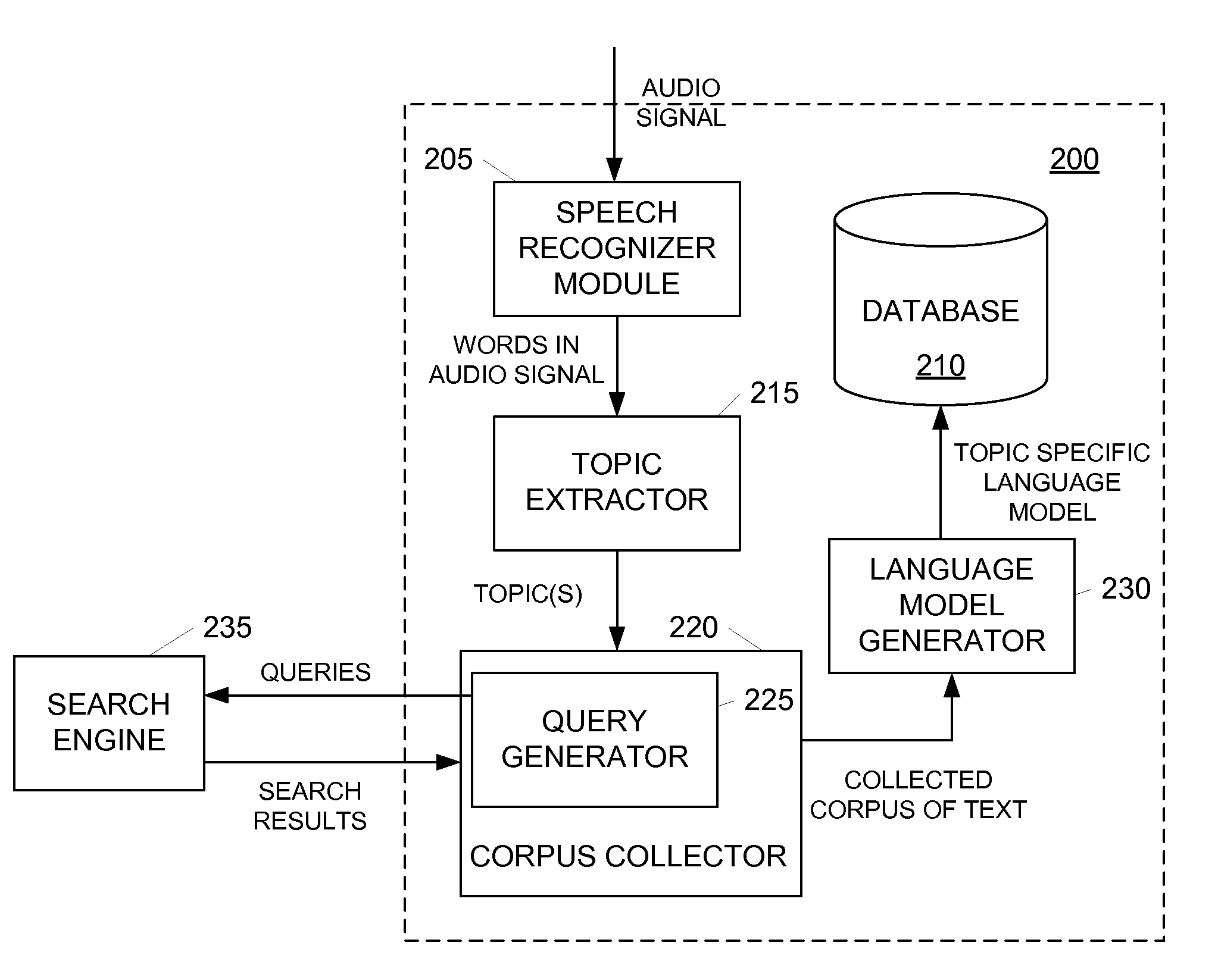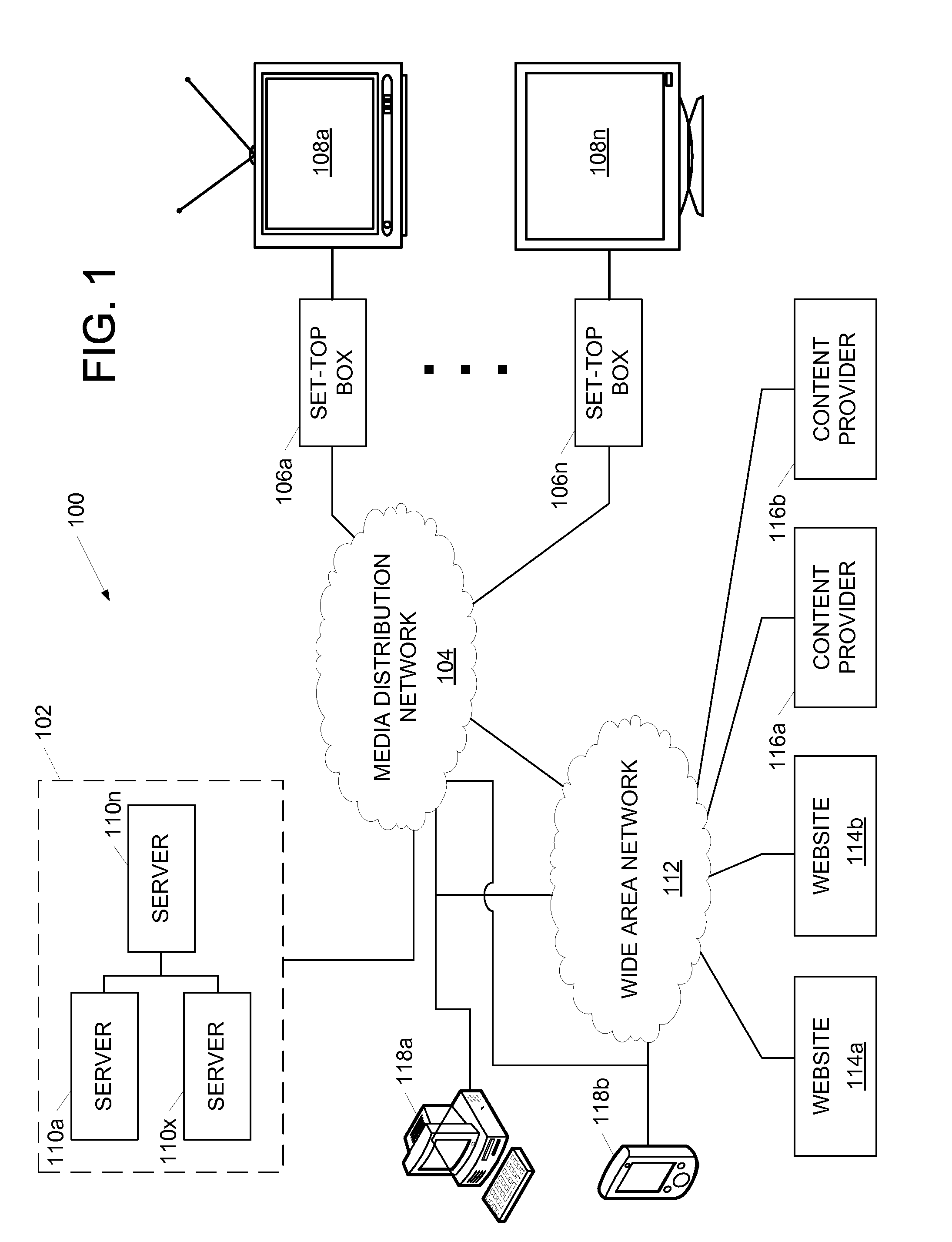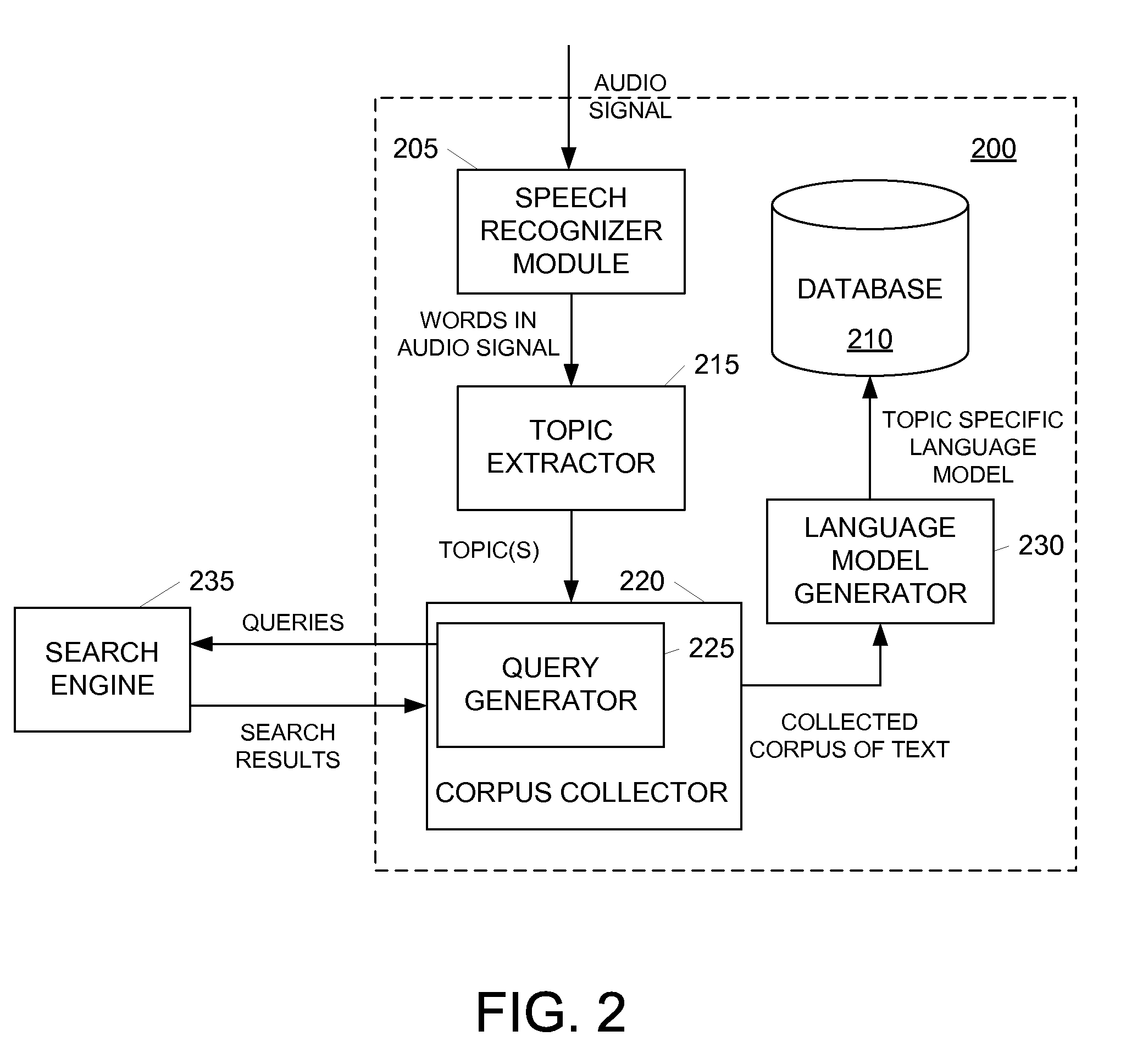Generating Topic-Specific Language Models
a topic-specific language and language model technology, applied in the field of topic-specific language models, can solve the problems of not offering the most accurate or optimal representation of natural language for a given topic, and the language model used is built, so as to improve the accuracy of speech recognition
- Summary
- Abstract
- Description
- Claims
- Application Information
AI Technical Summary
Benefits of technology
Problems solved by technology
Method used
Image
Examples
Embodiment Construction
[0016]FIG. 1 illustrates a content processing and distribution system 100 that may be used in connection with one or more aspects described herein. The distribution system 100 may include a headend 102, a network 104, set top boxes (STB) 106 and corresponding receiving devices (e.g., receiver, transceiver, etc.) 108. The distribution system 100 may be used as a media service provider / subscriber system wherein the provider (or vendor) generally operates the headend 102 and the network 104 and also provides a subscriber (e.g., client, customer, service purchaser, user, etc.) with the STB 106.
[0017]The STB 106 is generally located at the subscriber location such as a subscriber's home, a tavern, a hotel room, a business, etc., and the receiving device 108 is generally provided by the subscribing client. The receiving device 108 may include a television, high definition television (HDTV), monitor, host viewing device, MP3 player, audio receiver, radio, communication device, personal com...
PUM
 Login to View More
Login to View More Abstract
Description
Claims
Application Information
 Login to View More
Login to View More - R&D
- Intellectual Property
- Life Sciences
- Materials
- Tech Scout
- Unparalleled Data Quality
- Higher Quality Content
- 60% Fewer Hallucinations
Browse by: Latest US Patents, China's latest patents, Technical Efficacy Thesaurus, Application Domain, Technology Topic, Popular Technical Reports.
© 2025 PatSnap. All rights reserved.Legal|Privacy policy|Modern Slavery Act Transparency Statement|Sitemap|About US| Contact US: help@patsnap.com



